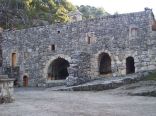| Random image |
 |

Mayfouq - Kattara
|
 |
|
 |
 |
BABYLONIANS
The Assyrians yielded to the Neo-Babylonians, who
witnessed more frequent revolts in the Phoenician cities. Tyre rebelled
again and for thirteen years resisted a siege by the troops of
Nebuchadnezzar (587-74 B.C.). After this long siege, the city capitulated;
its king was dethroned, and its citizens were enslaved.
The Achaemenids ended Babylonian rule when Cyrus, founder of the Persian
Empire, captured Babylon in 539-38 B.C. and Phoenicia and its neighbors
passed into Persian hands. Cambyses (529 - 522 B.C.), Cyrus's son and
successor, continued his father's policy of conquest and in 529 B.C. became
suzerain of Syria, Lebanon, and Egypt. The Phoenician navy supported Persia
during the Greco-Persian War (490-49 B.C.). But when the Phoenicians were
overburdened with heavy tributes imposed by the successors of Darius I
(521-485 B.C.), revolts and rebellions resumed in the Lebanese coastal
cities.
The Phoenicians finally declined when Alexander the Great swept through the
Middle East in the 4th century BC and Phoenicia was gradually Hellenised. In
64 BC, Pompey the Great conquered Phoenicia and it became part of the Roman
province of Syria. Beirut became an important centre under Herod the Great
and splendid temples were built at Baalbeck.
|